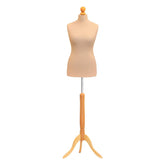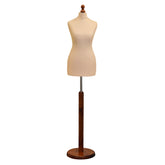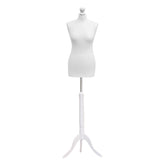Choosing a Heavy Duty Clothing Rack You Can Trust
When you hear "heavy duty clothing rack," don't just picture a slightly stronger version of what you might find in a high-street shop. Think of it as an industrial-grade piece of equipment, meticulously engineered from high-strength materials like steel to handle serious weight without so much as a wobble. These are the workhorses of the storage world, built to provide a reliable, long-term organisational system for demanding commercial spaces and busy homes alike.
Why Flimsy Rails Fail and Heavy Duty Racks Prevail
We’ve all seen it happen. That slow, sad sag of a cheap clothes rail giving up under the weight of a few winter coats. It’s a common frustration that stems from a fundamental design flaw in most consumer-grade rails, which are often built for looks, not longevity. This inevitably leads to failure, mess, and the need for a replacement.
A proper heavy duty clothing rack isn't a temporary fix; it's a permanent solution. It's an investment in dependable, high-capacity organisation that's been specifically designed for tough environments. This isn't an accident—it's the result of very deliberate engineering choices.
The Foundation of Strength
So, what really sets these racks apart? It all comes down to their construction. They are built with industrial-grade materials and a far superior structural design, creating a framework you can genuinely trust. This focus on durability tackles the exact points where weaker alternatives always fail.
- Robust Materials: Most heavy duty models are made from thick-gauge steel tubing. This gives them exceptional resistance to bending and warping, even when loaded to the brim.
- Superior Joint Construction: Forget flimsy screws that come loose. Here, the joints are often fully welded, creating a single, rigid unit that won’t start to wobble or shift over time.
- Stable Base Design: A well-designed base, like an H-frame or Z-frame, is crucial. It distributes the weight evenly across the floor, which is key to preventing the rack from tipping over, even when it’s completely full.
This shift towards more durable storage isn't just anecdotal; it's a clear market trend. The global garments display rack industry is projected to hit approximately $1.5 billion by 2025, with Europe being a significant part of that market. This growth is fuelled by the need for efficient display solutions in both retail and the home, and it’s no surprise that metal racks dominate because of their sheer strength. You can learn more about the growth of the garment rack market at archivemarketresearch.com.
Deconstructing Strength: What Defines a Heavy Duty Rack?
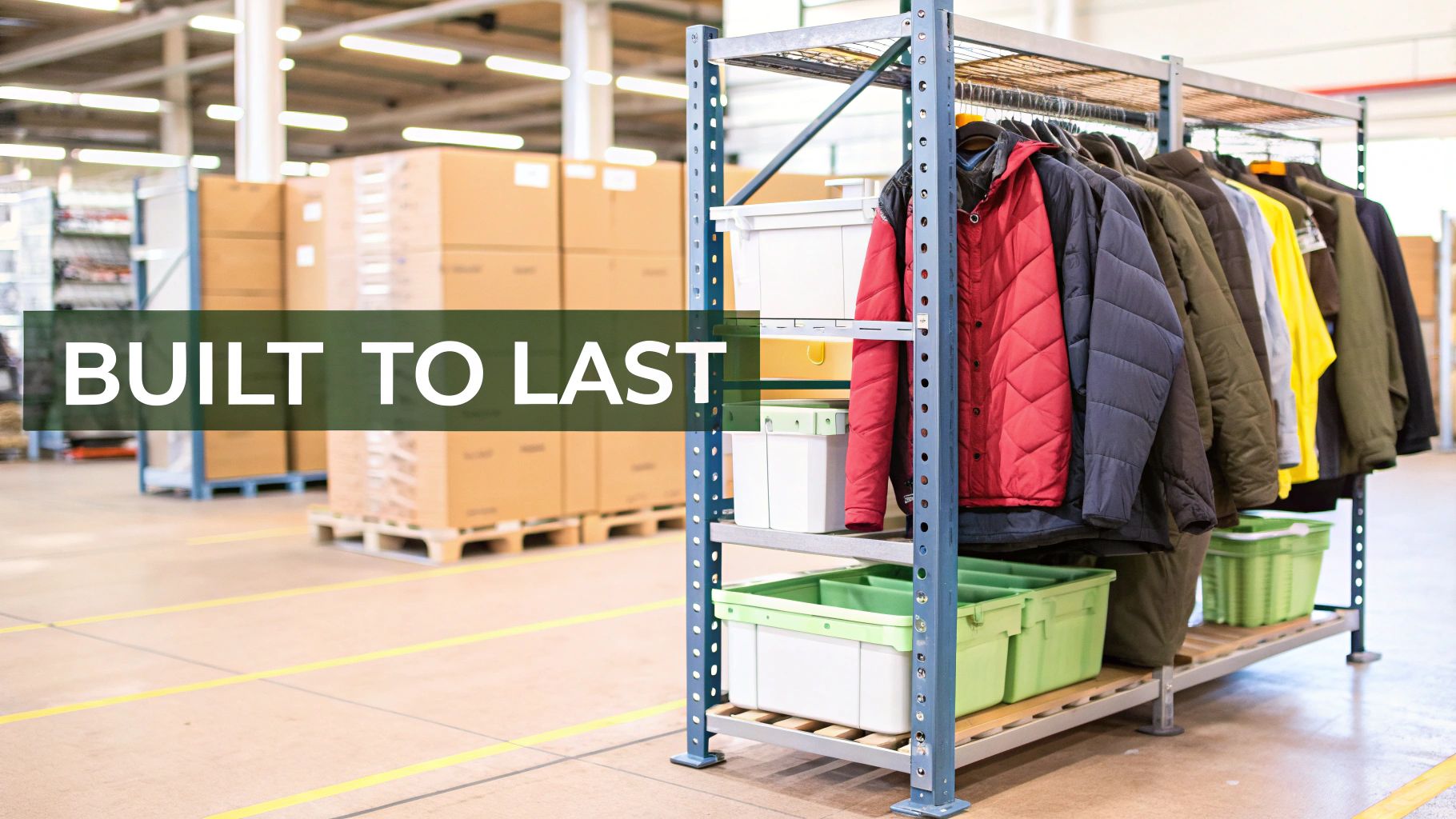
What really separates a proper industrial-grade rack from a standard one you might pick up for the spare room? It’s not just a promise on the box; it’s baked into its very anatomy. A genuine heavy duty clothing rack is defined by the quality of its materials and the intelligence of its construction, which work together to create unshakable stability.
The biggest giveaway is the material. While many racks claim to be "metal," the specific type and thickness are what truly count. Industrial-grade steel is the undisputed champion here, offering a superior strength-to-weight ratio that stops it from bending and bowing, even under extreme loads.
Unlike lighter metals like aluminium, which might be chosen for portability, steel provides the raw structural integrity needed for demanding environments. Think busy retail stockrooms, theatrical wardrobe departments, or a tailor's workshop. This focus on sheer durability is what drives the professional market.
The Bones of the Build
Beyond the metal itself, how the rack is put together is paramount. Think of it like the difference between a flimsy, flat-pack shed and a house with a solid foundation. The way the components are joined dictates the rack's overall rigidity and how long it will last.
A truly heavy duty rack is a unified system. Every component, from the thickness of the rail to the type of weld and the design of the base, contributes to its ability to withstand pressure without failing. It’s an exercise in practical engineering, not just assembly.
Key construction elements to look out for include:
- Fully Welded Joints: Top-tier racks often feature welded joints, which create a single, rigid frame. This is far superior to screw-together designs that can loosen over time and lead to that dreaded wobble.
- Thick-Gauge Tubing: Pay attention to the diameter and thickness of the steel tubes. A thicker gauge provides much greater resistance to bending, ensuring the top rail remains perfectly straight even when fully laden with heavy winter coats or dozens of suits.
- Reinforced Base Design: The base is the rack's anchor. An H-base provides a wide, stable footprint that’s ideal for stationary use, while a Z-base allows for convenient nesting and space-saving storage when you have multiple rails.
Meeting Commercial Demand
This demand for robust, high-capacity racks is growing, especially here in the UK. Market forecasts for 2025 to 2031 show a clear rise in revenue for garment racks, driven by commercial, household, and industrial sectors that need something that can hold over 50 kg per rail. Freestanding models are particularly popular in hospitality and large-scale garment storage.
To see how these features come together in a high-capacity model, you can explore the design of this heavy duty 6ft garment rail. This trend is pushing manufacturers to use enhanced steel alloys and protective coatings to resist wear and tear. Once you understand these foundational elements, you can easily spot true quality and avoid the pretenders.
Decoding Weight Capacity: From Kilograms to Coats

When you’re looking at a heavy-duty clothing rack, the most important figure is its weight capacity. But what does a number like ‘150 kg’ actually mean in a real-world stockroom or your own wardrobe? It’s easy to glance over, but understanding this number is the secret to choosing a rail that won't buckle under pressure.
Let’s put it into perspective. A heavy winter coat weighs about 2.5 kg. So, a rail with a 150 kg capacity isn’t just strong—it’s built to hold around 60 heavy coats at once. Suddenly, that abstract number becomes something tangible, giving you a clear picture of what the rail can handle.
This kind of practical understanding is essential. Whether you’re sorting out a seasonal wardrobe, packing a rail with dense retail inventory, or hanging weighty costumes for a theatre production, getting the capacity right means your rail will do its job without any drama.
To help you visualise this, here's a quick guide matching weight ratings to common clothing loads.
Heavy Duty Rack Weight Capacity Guide
| Weight Capacity | Example Garment Load | Ideal Use Case |
|---|---|---|
| Up to 75 kg | ~100-120 T-shirts or ~30 heavy winter coats | Home use, pop-up shops, light retail displays |
| 75 kg - 120 kg | ~40-50 pairs of jeans or 60-70 blazers | Busy retail floors, small stockrooms, designer studios |
| 120 kg - 200 kg+ | ~70-80 heavy wool coats or a full rail of wedding dresses | Commercial laundries, warehouse storage, theatre wardrobes |
This table should give you a much clearer idea of the strength you need, ensuring you don't underestimate your requirements.
Static Load vs Dynamic Load
Here’s something many people overlook, especially if their rail has wheels: the crucial difference between static and dynamic loads. These two ratings tell you very different things about a rail's true strength.
- Static Load: This is the maximum weight a clothing rail can hold when it’s standing perfectly still. Think of it as the rail's absolute maximum strength when it's not being moved.
- Dynamic Load: This figure tells you the maximum weight the rail can safely support while being wheeled around. It’s almost always lower than the static load because movement puts extra stress on the frame, joints, and castors.
If you’re running a busy stockroom or a tailor’s studio where rails are constantly on the move, the dynamic load is the number that really matters. Ignoring it is a recipe for disaster.
Always check both static and dynamic capacity. A rail that can hold 200 kg while stationary might only be rated for 120 kg when in motion. This difference is critical for safety and longevity in active environments.
How Design Influences Strength
A rail's design also has a huge impact on how it handles weight. The length of the hanging bar, for example, is a major factor. A longer rail needs to be made from a thicker gauge of steel to stop it from sagging in the middle once it's loaded up.
For those needing to maximise their space, clever designs like a 2-tier double garment rail offer an excellent solution. They give you twice the hanging space on a single footprint, distributing the weight intelligently across two levels to maintain stability and strength.
By getting to grips with these specifications, you can confidently choose a rail that perfectly matches your needs, ensuring it will be a reliable workhorse for years to come.
Matching The Right Rack To Your Space
So, you’ve got a handle on materials and weight capacity. Now for the interesting part: choosing the features that will make a heavy-duty clothing rack actually work for you. This is where we move from the technical specs to the practical, day-to-day reality of how a rack solves your storage problems.
The decision-making process often starts right at the bottom – with the base. It sounds simple, but whether you need your rack to stay put or move around on a whim will completely change your workflow.
Mobility Versus Stability
Your first big choice is between fixed feet and industrial-grade castors. Fixed feet are all about maximum stability, anchoring the rack firmly to the floor. This is perfect for a permanent shop display or a home open-wardrobe that isn't going anywhere.
On the other hand, industrial castors give you freedom. They let you completely reconfigure a retail space, wheel stock from the delivery bay to the shop floor, or move garments between sewing stations without breaking a sweat. The best ones come with brakes to lock the rack in place, giving you that handy mix of mobility and stability.
It all comes down to your workflow. A stationary rack offers peace of mind on a busy shop floor, while a mobile one provides the flexibility essential for a dynamic stockroom or workshop.
Finding The Perfect Fit
Adjustability is another game-changer. Let's be honest, not all spaces are perfectly uniform, and neither are clothes. Racks with adjustable height and width offer incredible versatility, letting you tailor the unit to your exact needs.
This flexibility means you can:
- Accommodate long garments like coats or dresses by extending the height.
- Fit the rack neatly into an alcove or a specific space by adjusting the width.
- Create custom setups for different clothing types, all on the same rail.
This kind of customisation is key to making the most of your space, as you can see below.

As the image shows, adding tiers can massively increase your storage capacity without taking up any more floor space – a huge win for smaller environments.
Specialised Base Designs
The base of a rack does more than just hold it up; its design dictates how and where it can be used. In the world of commercial-grade racks, you'll constantly run into two main designs: the H-base and the Z-base.
Each has its own unique advantage. An H-base provides a wide, incredibly stable footprint that’s ideal for freestanding displays you don’t want getting knocked over. A Z-base, however, is ingeniously designed to let multiple racks nest together when not in use, which is an absolute lifesaver for saving floor space in a cramped stockroom.
For more on this, a comprehensive guide to heavy duty storage racks can provide some extra detail.
To help you decide, this table breaks down the core differences between the most common configurations.
Feature Comparison for Heavy Duty Racks
| Feature | Z-Base Rack | H-Base Rack | Multi-Tier Rack |
|---|---|---|---|
| Primary Use | High-density storage, stockrooms | Freestanding retail displays | Maximising vertical space |
| Mobility | Excellent; designed for nesting | Good, but less space-efficient | Varies based on base type |
| Stability | Very stable when loaded | Extremely stable, wide footprint | Dependent on overall build quality |
| Space Saving | Superior; nests to save floor space | Moderate; does not nest | Excellent; doubles or triples capacity |
Choosing the right features, like a specific base or adjustable tiers, ensures the rack isn't just a piece of metal but a genuine solution to your storage needs.
For instance, something like a heavy duty 5ft long and 5ft high 2 tier double garment rail can quite literally double your hanging capacity, making it a brilliant choice for getting the most out of a small area. It's no surprise that in the UK, durable metal racks make up over 60% of the market thanks to their sheer strength. By thinking carefully about these features, you can find a rack that’s perfectly suited to your purpose.
Real-World Scenarios Where These Racks Excel
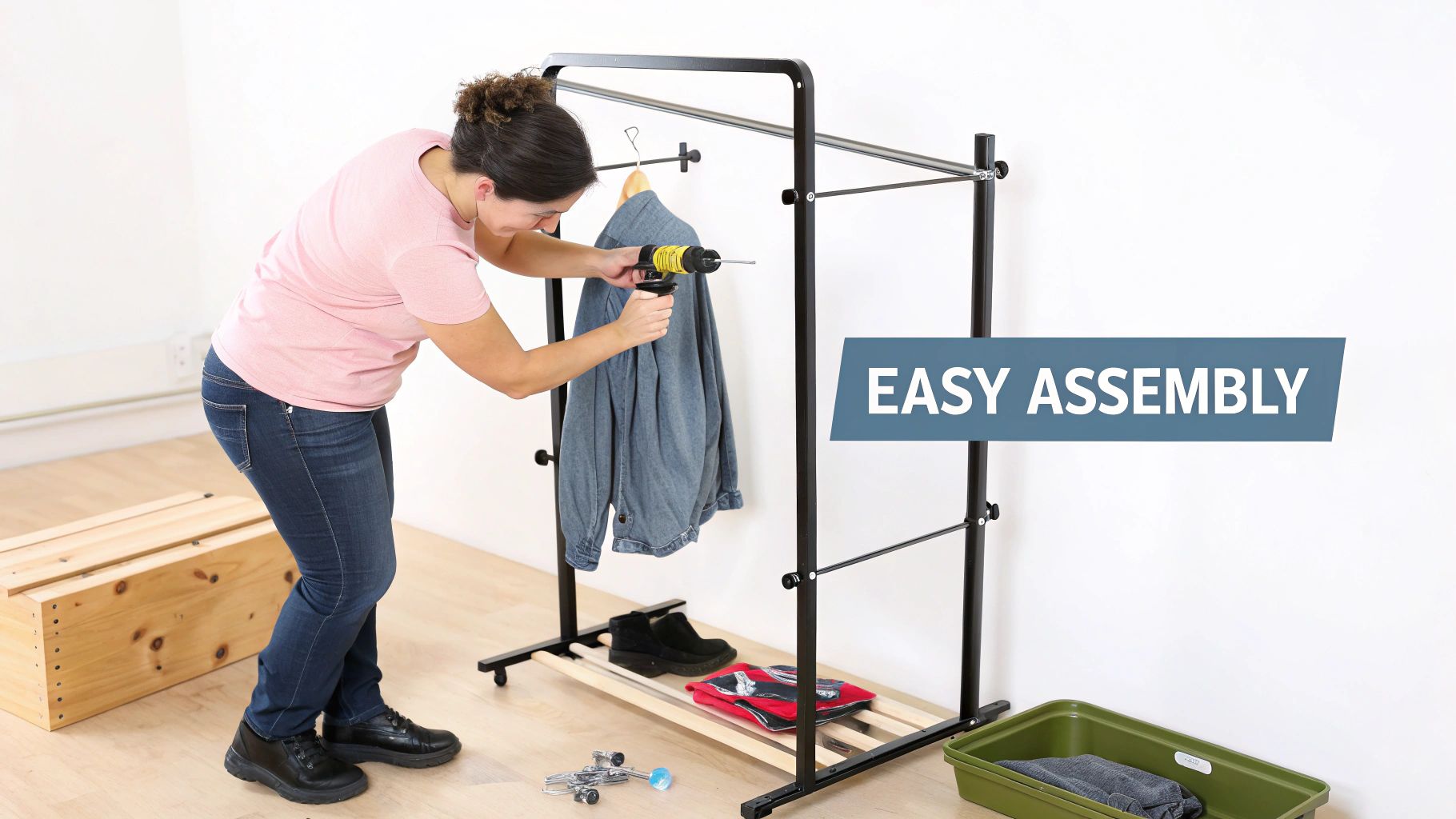
It’s one thing to talk about steel gauges and weight capacities, but it’s in the real world where a heavy-duty clothing rack truly proves its worth. These aren't just for storage; they are workhorses, built to solve genuine problems in some pretty demanding environments. From a packed shop floor to a creative's home studio, their sheer strength provides a reliable foundation you can build on.
Let's walk through a few situations where these industrial-strength rails are less of a convenience and more of an absolute necessity. You’ll see how the right piece of kit can prevent the all-too-common frustration of equipment that just isn’t up to the job.
The High-Traffic Retail Store
Picture a busy boutique on a Saturday afternoon. Shoppers are browsing, pulling items from the rail, trying them on, and hanging them back. The racks are groaning under the weight of winter coats, leather jackets, and an entire collection of denim. A standard, flimsy rail from a high street shop would be wobbling, bending, or on the verge of collapsing.
This is precisely the environment a heavy-duty rack is designed for.
- Unwavering Stability: Its solid steel frame and wide base mean it stands firm, even with customers jostling around it. This keeps the shop floor safe and looking professional.
- Serious Capacity: It can easily hold a full run of the heaviest outerwear without the slightest hint of bowing. You can display your entire stock with confidence.
- Built to Last: The tough, powder-coated finish is made to resist the inevitable scratches and scuffs of a retail setting, so your displays look sharp season after season.
In a retail shop, a garment rail is more than just storage – it's part of the furniture. Its reliability has a direct impact on the customer experience and safety, making a heavy-duty model an essential investment.
The Behind-the-Scenes Stockroom
Now, think about the stockroom of a theatre, a TV studio, or a fashion hire company. Space is always tight, and organisation is everything. Staff need to find, move, and sort huge volumes of costumes and inventory, often including incredibly heavy or elaborate garments. A mobile heavy-duty rack becomes a logistical lifesaver here.
With industrial-grade castors, entire collections can be wheeled from the stockroom to a fitting room or out to a loading bay with very little effort. Their robust construction means they can handle being moved while fully loaded, which is where lesser rails would fail. For all sorts of businesses, whether managing stock or uniforms, our racks offer a solid solution for a wide range of business storage needs. That kind of efficiency saves a huge amount of time and manual labour.
Creative and Practical Home Use
Finally, let's bring it home. In a modern flat or loft, a sleek black heavy-duty clothing rack can function as a minimalist open wardrobe, turning your clothing collection into a design feature. Its industrial aesthetic is a perfect match for contemporary interiors, and its strength guarantees it can hold your entire wardrobe without breaking a sweat.
Or think about the garage or utility room. It’s the perfect organisational tool for all that bulky gear. We’re talking about heavy motorcycle leathers, ski equipment, or a family's worth of winter coats. Using a durable rack like this 5ft wide and high garment rail gets all that gear properly organised and easy to access, freeing up precious floor space.
Frequently Asked Questions
Even after going through all the details, a few practical questions almost always pop up. Let's tackle some of the most common ones to help you feel completely confident in your choice.
Can I Put a Heavy Duty Clothing Rack Together on My Own?
You certainly can. The vast majority of these racks are designed for a straightforward, one-person setup. Most use a simple push-pin or locking system, meaning you won't need to break out a toolbox.
Even though the parts are incredibly sturdy, they're not too heavy to handle. You should be able to get your new rack up and running in under ten minutes. That said, if you've gone for a particularly large or multi-level rack, having a friend to help lift the top rail into place can make things a bit easier.
How Do I Look After My Rack to Make Sure It Lasts?
Good maintenance is simple and doesn't take much time at all. The single most important thing you can do is check the castors every few months for any build-up of dust, hair, or other debris. This stuff can jam the wheels, making the rack difficult to move and putting a lot of strain on the whole frame.
A quick wipe-down with a dry cloth will also keep the frame looking sharp and professional. For powder-coated steel racks, that’s really all it takes to keep them in prime condition for years to come.
One of the biggest mistakes we see is people overloading a rack past its dynamic capacity and then trying to wheel it around. This puts a huge amount of stress on the welds and the castors, which can drastically shorten its life. Always stick to the weight limits for a rack that's built to last.
What’s the Real Difference Between Commercial and Residential Racks?
It all comes down to the build quality and the materials used. A proper commercial heavy duty clothing rack is made from a thicker gauge of steel. You'll often find it has welded joints and tough, industrial-grade castors that are built to be moved around all day under a heavy load. Function and durability are the top priorities.
Residential racks might look the part, but they're typically built for much lighter, stationary use at home. They often use thinner metal tubing and less rugged fittings. If you need a rack for a retail floor, a busy stockroom, or for transporting garments, a commercial-grade model is the only sensible and safe option for long-term reliability.
An Investment in Strength and Organisation
As we've seen, picking a heavy-duty clothing rack is more than just a quick purchase for storage. It's a genuine investment in long-term organisation and, frankly, peace of mind.
You now have the knowledge to look past the marketing fluff and focus on what really counts: quality materials, a realistic understanding of weight capacity, and the specific features that will actually serve your space. This is what separates a short-term fix from a lasting solution.
When you make a durable choice, you get to stop worrying about the dreaded sag of an overloaded rail or, worse, a complete collapse. It frees you up to concentrate on what's important, whether that's running your business smoothly, keeping your creative studio in order, or just enjoying a calm, tidy home. The right rack is the foundation for all of it.
The core principle is simple: invest in strength now to prevent failure later. A reliable rack secures your garments and streamlines your environment, proving its value daily.
This idea of building on a solid foundation extends beyond just your wardrobe. In a professional setting, for example, understanding things like heavy-duty floor protection is just as vital for creating a safe and efficient workspace. By choosing a dependable structure like the Display Guru 6ft garment rail, you're not just buying a product; you're building a system you can count on.
Ready to build a more organised space? Explore the full range of professional-grade garment rails and display solutions at Display Guru and find the perfect fit for your needs at https://www.displayguru.co.uk.


